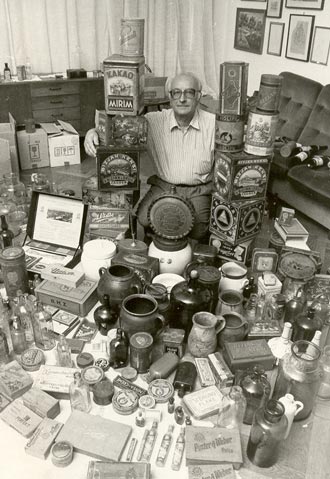Permanent Display 50. Dr Ante Rodin''s Collection of Old Packaging
 "... when I come across a package, I have no peace until I pick it up and take it home..."
"... when I come across a package, I have no peace until I pick it up and take it home..."
Dr Ante Rodin has spent all his working life in Zagreb. His professional interest has revolved exclusively around packaging, packaging technology and a scientific study of this subject so typical of the 20th century consumer society. When it comes to packaging and its tecnological and environmental aspects, his enthusiasm has no bounds.
Packaging awakened and stirred his passion for collecting. In 1971, his preoccupation became the moving force of the future collection of old industrial packaging. As a theoretician of packaging and its development he has been keenly aware of its civilisation aspects. As a result, his collecting interests soon evelved to include more recent items of packaging.
What is packaging?
It is a box, a tin, a bottle, a bag ... intended to protect, preserve and wrap the product. Packaging is also a form of visual communication with the consumer, its design speaking volumes of the product and the manufacturer. It must, therefore, be well-designed and visually striking.
 Dr Ante Rodin's collection of old packaging has an important cultural, historic and economic value as it is a specific illustration of Zagreb's everyday life and a witness of the changes in the civilisation, economy and politics.
Dr Ante Rodin's collection of old packaging has an important cultural, historic and economic value as it is a specific illustration of Zagreb's everyday life and a witness of the changes in the civilisation, economy and politics.
Today, the collection counts more than 6,000 items, of which 2,000, intimately related to Zagreb, make up the donation to the city of Zagreb. The items are connected with Zagreb in that they were either created and manufactured or imported and marketed in Zagreb. They are a surviving proof of the 20th century industrial and consumer revolution but also speak of the high artistic skill of the domestic designers and the advanced industrial and marketing culture in this part of the world.



Nada Premerl

